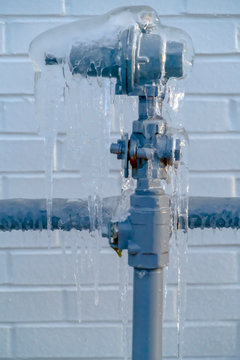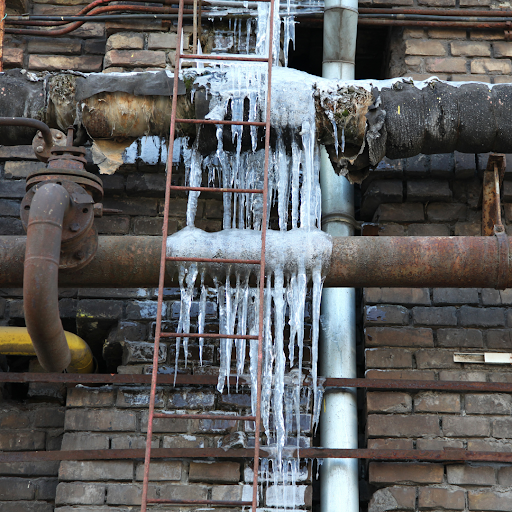Important Tips to Avoid Frozen Pipes in Cold Weather: Professional Insights
Important Tips to Avoid Frozen Pipes in Cold Weather: Professional Insights
Blog Article
Almost everyone will have their own individual opinion about Winter Plumbing Precautions: Preventing Frozen Pipes.

Winter can ruin your plumbing, specifically by freezing pipelines. Here's just how to avoid it from happening and what to do if it does.
Introduction
As temperature levels drop, the danger of icy pipelines increases, potentially leading to expensive repairs and water damage. Recognizing how to avoid frozen pipelines is essential for house owners in cool climates.
Prevention Tips
Protecting prone pipelines
Cover pipes in insulation sleeves or make use of warmth tape to protect them from freezing temperatures. Focus on pipes in unheated or exterior areas of the home.
Heating techniques
Keep indoor areas appropriately warmed, specifically locations with plumbing. Open cabinet doors to permit cozy air to distribute around pipes under sinks.
Just how to identify icy pipelines
Search for reduced water circulation from faucets, unusual odors or sounds from pipelines, and visible frost on revealed pipelines.
Long-Term Solutions
Architectural modifications
Take into consideration rerouting pipelines far from outside walls or unheated locations. Add added insulation to attics, basements, and crawl spaces.
Upgrading insulation
Invest in premium insulation for pipes, attic rooms, and wall surfaces. Proper insulation assists preserve consistent temperature levels and reduces the threat of icy pipelines.
Safeguarding Outside Pipes
Yard hoses and outside faucets
Detach and drain pipes yard tubes prior to winter season. Install frost-proof faucets or cover outdoor taps with insulated caps.
Understanding Frozen Pipelines
What creates pipes to ice up?
Pipelines ice up when subjected to temperatures below 32 ° F (0 ° C) for prolonged periods. As water inside the pipelines ices up, it broadens, putting pressure on the pipeline wall surfaces and possibly triggering them to burst.
Threats and damages
Icy pipes can bring about water disturbances, home damages, and costly fixings. Ruptured pipelines can flood homes and create extensive architectural damages.
Signs of Frozen Pipeline
Determining icy pipelines early can prevent them from bursting.
What to Do If Your Pipes Freeze
Immediate activities to take
If you believe frozen pipes, keep taps open to soothe pressure as the ice melts. Use a hairdryer or towels soaked in hot water to thaw pipes gradually.
Final thought
Protecting against icy pipelines calls for aggressive procedures and quick actions. By comprehending the causes, indications, and preventive measures, property owners can safeguard their plumbing throughout cold weather.
5 Ways to Prevent Frozen Pipes
Drain Outdoor Faucets and Disconnect Hoses
First, close the shut-off valve that controls the flow of water in the pipe to your outdoor faucet. Then, head outside to disconnect and drain your hose and open the outdoor faucet to allow the water to completely drain out of the line. Turn off the faucet when done. Finally, head back to the shut-off valve and drain the remaining water inside the pipe into a bucket or container. Additionally, if you have a home irrigation system, you should consider hiring an expert to clear the system of water each year.
Insulate Pipes
One of the best and most cost-effective methods for preventing frozen water pipes is to wrap your pipes with insulation. This is especially important for areas in your home that aren’t exposed to heat, such as an attic. We suggest using foam sleeves, which can typically be found at your local hardware store.
Keep Heat Running at 65
Your pipes are located inside your walls, and the temperature there is much colder than the rest of the house. To prevent your pipes from freezing, The Insurance Information Institute suggests that you keep your home heated to at least 65 degrees, even when traveling. You may want to invest in smart devices that can keep an eye on the temperature in your home while you’re away.
Leave Water Dripping
Moving water — even a small trickle — can prevent ice from forming inside your pipes. When freezing temps are imminent, start a drip of water from all faucets that serve exposed pipes. Leaving a few faucets running will also help relieve pressure inside the pipes and help prevent a rupture if the water inside freezes.
Open Cupboard Doors
Warm your kitchen and bathroom pipes by opening cupboards and vanities. You should also leave your interior doors ajar to help warm air circulate evenly throughout your home.

Do you like reading about How to prepare your home plumbing for winter weather? Write feedback below. We'd be glad to find out your suggestions about this page. We hope that you visit us again before long. Be sure to pause to promote this blog posting if you enjoyed reading it. Thanks so much for going through it.
Book A Service Call Report this page